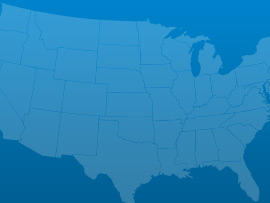Nevada has a total of 675 state regulated dams, 158 of which are considered to have “high hazard” potential. A high hazard dam is defined as a dam whose failure would cause a loss of life and significant property damage. Of the state’s high hazard dams, only 18 are considered to be in “poor” condition. A dam with a poor condition rating is considered to have a safety deficiency for loading conditions that may occur. The current Nevada dam repair construction needs are estimated to be $44 million, and due to budget constraints, repair work is consistently needed with a backlog of maintenance requests and a shortfall in funding as repair urgencies and priorities are shifted. When comparing the quantity of Emergency Action Plans (EAP) for high hazard dams (which help prevent loss of life and minimize property damage) to the national average, Nevada has approximately 15% more than the national average with 85% of the state’s high hazard dams having EAPs in place. Unfortunately, the dam safety budget for high hazard dams is almost half of the national average, when comparing services such as inspections, legislation, and EAPs. Additionally, the number of agency staff per high hazard dam is approximately half of the national average.
With the state dam safety budget and staff per high hazard dam both being approximately half the national average, appropriate more funding to high hazard dam safety, along with additional staff.
 Aviation
Aviation Dams
Dams Drinking Water
Drinking Water Flood Control
Flood Control Schools
Schools Solid Waste
Solid Waste Transportation
Transportation Wastewater
WastewaterA: Exceptional, B: Good, C: Mediocre, D: Poor, F: Failing, ?: Incomplete
Each category was evaluated on the basis of capacity, condition, funding, future need, operation and maintenance, public safety, resilience, and innovation
Aviation
30 public-use airports
Bridges
36 of the 1,853 bridges are structurally deficient
Bridges
$10.70 million in bridge funds came from the Federal Highway Bridge Fund in 2011
Dams
85% of the state regulated dams have an Emergency Action Plan
Dams
150 high hazard dams
Drinking Water
$5.6 billion in drinking water infrastructure needs over the next 20 years
Energy
4.444 gigawatt-hours of renewable energy every year, ranking it 23rd
Hazardous Waste
1 sites on the National Priorities List
Levees
103 miles of levees
Public Parks
$18.8 million of unmet needs for its parks system
Rail
2 freight railroads covering 1,192 miles across the state, ranking 39th nationally by mileage
Roads
4,085 of the state’s 38,567 public roads are major roads, and 2% are in poor condition
Roads
$417.0 million a year in costs to motorists from driving on roads in need of repair, which is $242 /yr per motorist
Schools
$2.5 billion in estimated school infrastructure funding needs
Transit
65.1 million annual unlinked passenger trips via transit systems including bus, transit, and commuter trains
Wastewater
$2.9 billion in wastewater infrastructure needs over the next 20 years

March 03, 2017
As the President’s repeated in his address to Congress his pledge to dramatically increase infrastructure spending to the tune of $1 trillion, various Congressional Committees

March 01, 2017
On Tuesday night, President Trump addressed a joint-session of Congress for the first time in his presidency. Infrastructure was among the many issues he discussed.

February 28, 2017
U.S. motorists set a new record for vehicle miles travelled (VMT) in 2016, driving over 3.2 trillion miles, an increase of 70 billion miles from

February 17, 2017
Romantic dates, the Grammy awards and celebrating black history are not the only milestones of this week; the Oroville dam crisis in California and the